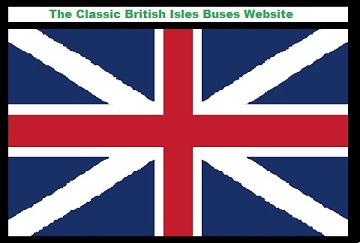

The Classic British Isles Buses Website
Manchester visits in March and May 1999 (by Shane Conway)
Page last updated on 4th September 2024
Email Events diary Past events list Classified adverts Classic U.K. Buses Classic Irish Buses Classic Manx Buses
During 1999, I paid two visits to the Manchester area. The first one, in March produced mostly modern vehicles, plus the Metrolink, which I had not previously encountered. The second one, on May 8th and 9th, was in conjunction with a special weekend display run by Manchester Museum of Transport to commemorate 100 years since the first municipal trams operated in Bolton. The first trip was made by car, the second by using the overnight express coach from Dublin to Leeds, which calls into central Manchester at around 5 a.m., then a final short hop on a blue coloured Magicbus (aka Stagecoach) Leyland Olympian to complete the night's travelling.

Stagecoach Manchester South Olympian 780 is seen in Piccadilly on an early Sunday morning in March 1999.
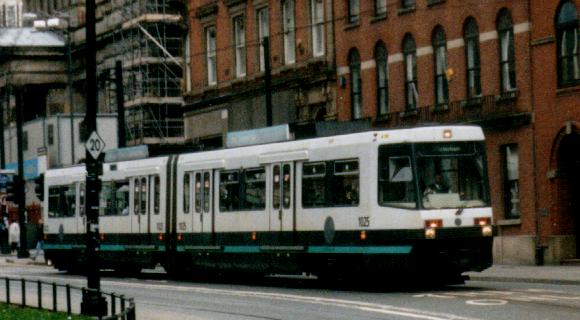
Metrolink tram 1025 approaching the city centre bus/tram interchange at Piccadilly in May 1999.
By combining the two visits on this page, it gives an interesting insight into both past and present transport systems in Manchester, Bolton and Stockport, and a reminder of how things have changed. Manchester area services at the time were mainly provided by Stagecoach and First Group vehicles, with smaller contributions from Arriva Manchester (with a Merseyside address!), Bullocks, Maynes, and a few Trent vehicles were encountered in Stockport heading into the Peak District. Quite a number of Wrights bodied vehicles were noticed on both visits, in both rigid and articulated formats and carrying both versions of First Manchester livery. Possibly if I had looked closer, some of the Stagecoach vehicles would probably have been from the Ribble fleet, but those stripes are all invading and monotonous (see one Stagecoach bus and you've seen ‘em all!!)
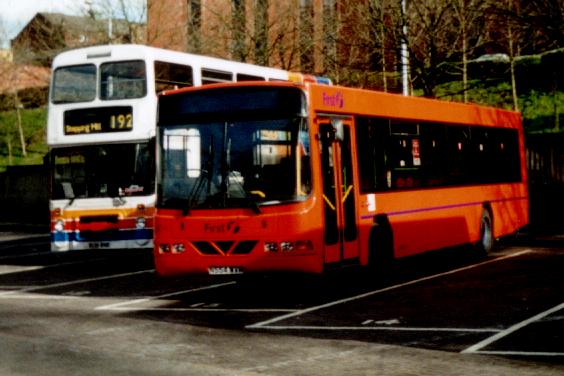
One of the many Wrights bodied vehicles to have been placed in service by First Group. Unlike later buses, this 1995 delivery was painted in what has been termed tomato soup livery.
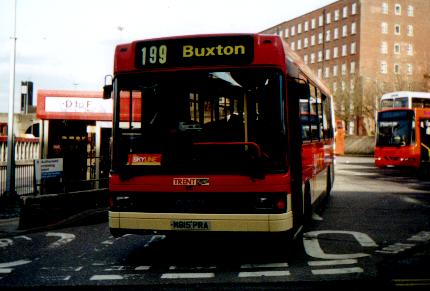
Trent vehicles could also be encountered in Stockport, operating into the Peak District National Park in Derbyshire. Registered N815 PRA, this bus is on route 199 to Buxton.
Anyway, now to the past.... The May event therefore harked back to an era when the local operators were just that, locally run and managed, and with readily identifiable different liveries and municipal crests. Red and grey for Lancashire United, maroon and cream for Bolton Corporation, that magnificently restored PD2 in Ashton's blue and cream, the green Salford and Bury buses, the nearly all red Ribbles, and Yelloway's tasteful yellow livery on their generations of AECs over the years..... All now gone, well almost anyway..... Except on that weekend when Boyle Street once again hosted them all, Leyland, AEC, Bristol, Daimler, Crossley – the great names from the past...
A nostalgic sight (for me) was the presence of FBN 232C, one of Bolton's East Lancs bodied Atlanteans, as I had once acquired sister bus HWH 266F with a view to restoring it. The condition of the latter's lower deck framework though soon put paid to that dream, and the bus was put out of its misery....... What might have been was brought back to me as I studied 232 at rest, and later I found two photos of 266 in service in the 1960s, which I bought........ Once I had got over that shock, the preserved buses parked outside beckoned, and over the course of the weekend I probably travelled on most of the vehicles which were used on the various free routes, or at least I attempted to anyhow. The museum cafe also does a brilliant line in Cornish pasties and mushy peas, which after travelling all night to get there, was very welcome!
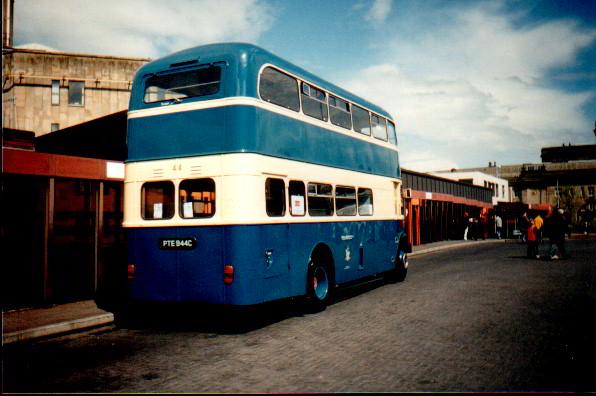
This 1965 Leyland PD2 was the only ex Ashton bus to take part. It's a forward entrance Roe bodied bus and has been beautifully restored to original condition. This provided the vintage journeys to Bolton on the Saturday along with a Stagecoach s/d bus.
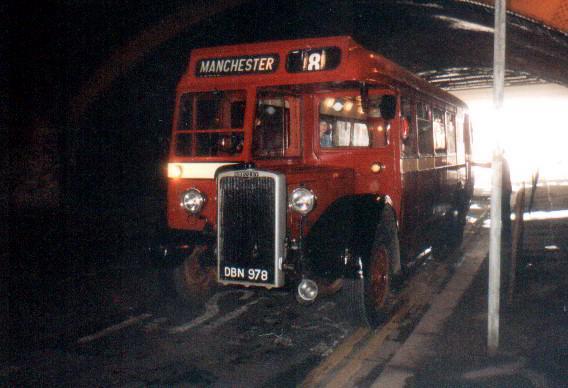
One of many buses seen on the short route to Victoria was this ex Bolton Crossley single decker. While most Bolton orders went to Leyland, they also had Daimlers, AECs and a Bedford as well as Crossleys.
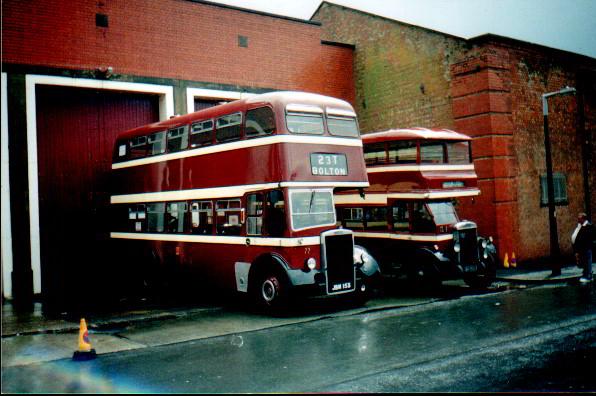
Two of Bolton's fleet of Leyland Titans are contrasted here. Nearest the camera is MCCW bodied no. 77 of 1956, and alongside it is a 1929 Leyland bodied petrol engined TD1. Both of these buses have also been produced as scale models.
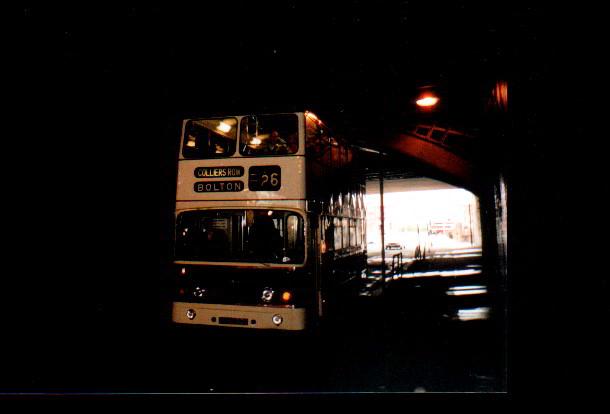
Once Bolton had settled on Atlanteans, this design of East Lancs body was produced on behalf of their then manager, Ralph Bennett, who later introduced the trend-setting Mancunian deckers in the late 1960s. This 1965 bus is seen under the arches at Salford Greengates, a slightly dark but dramatic setting.
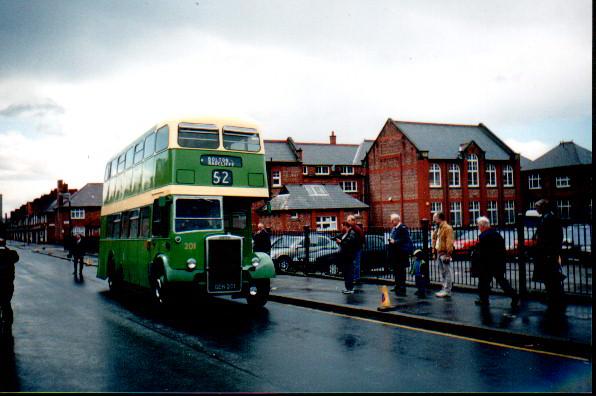
From the former Bury Corporation fleet two buses attended, and these showed the practice of a fleet that sourced buses from more than one manufacturer. These green and cream buses were AEC Regent 177 and Leyland Titan 201 (pictured above).
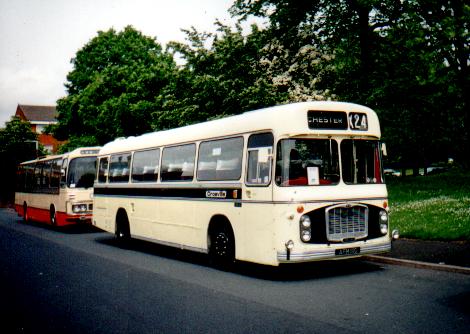
Crosville also ran services into Manchester, as well as covering much of North and Mid Wales. Their 1960s fleet was represented by this restored ECW bodied Bristol RE coach, new in 1968.
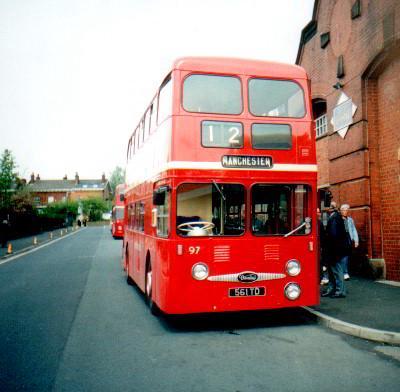
Lancashire United was among the first customers for the Daimler Fleetline. This Northern Counties bodied Fleetline was one of the earliest to be produced. New in 1962, it is now thought to be the oldest surviving example of its type.
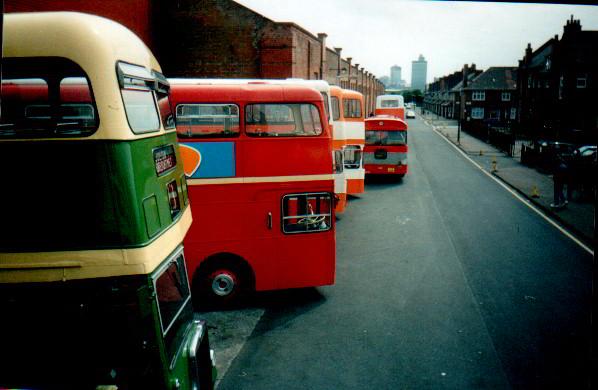
This view was taken from upstairs on one bus and is looking down Boyle Street towards the centre of Manchester. The red bus is a 1962 Daimler Fleetline with the single decker being a Plaxton Derwent bodied Leyland Leopard bus. Both of these were new to the now vanished Lancashire United fleet. The orange and white decker beyond that is an in-service First Manchester MCW Metrobus, its home garage being the redbrick building on the left of the picture.
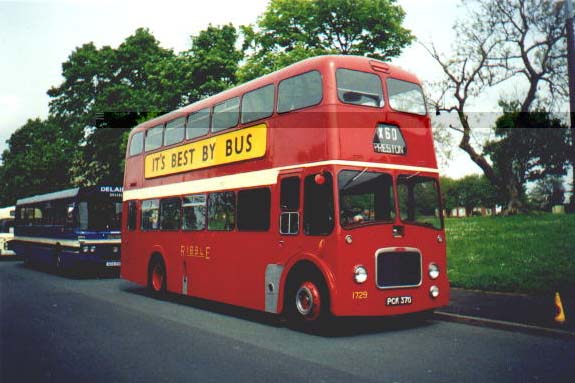
A reminder of Ribble Motor Services in its pre Stagecoach and National Bus Company era was provided by this full front PD3 with a Metro Cammell body dating from 1961. Like all Ribble deckers of its era, it has the Scottish style destination box, as well as an illuminated advert panel.
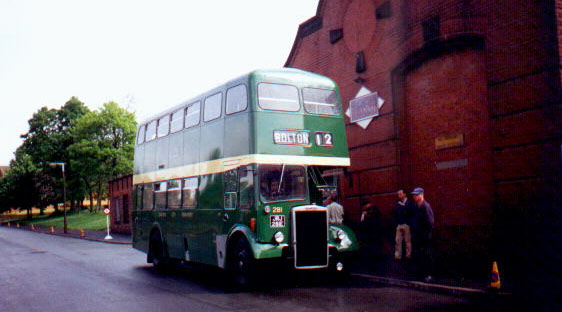
This Salford PD2 was new in 1967 and has a forward entrance MCW body. Again its original operator specified the exposed radiator, this and its green livery contrasting with the red painted Atlanteans and Fleetlines of larger neighbour Manchester City Transport.
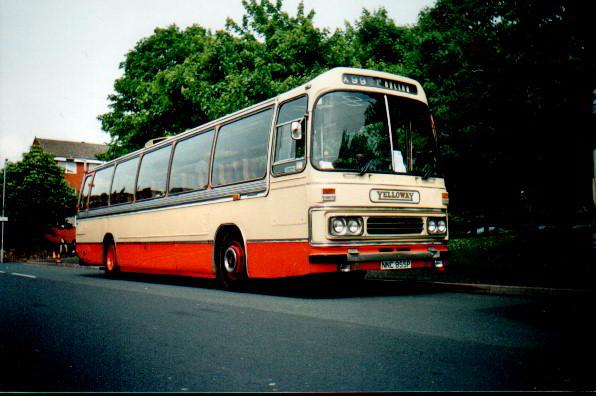
Yelloway, formerly based in Rochdale, sadly became a victim of changing owners and deregulation and ceased trading in 1989. For many years it had provided express coach services in the north-west, and most of its fleet was based on AEC chassis, such as this preserved 1976 Duple Dominant. The company also ran the products of Harrington and Plaxton over the years.
Email Events diary Past events list Classified adverts Classic U.K. Buses Classic Irish Buses Classic Manx Buses